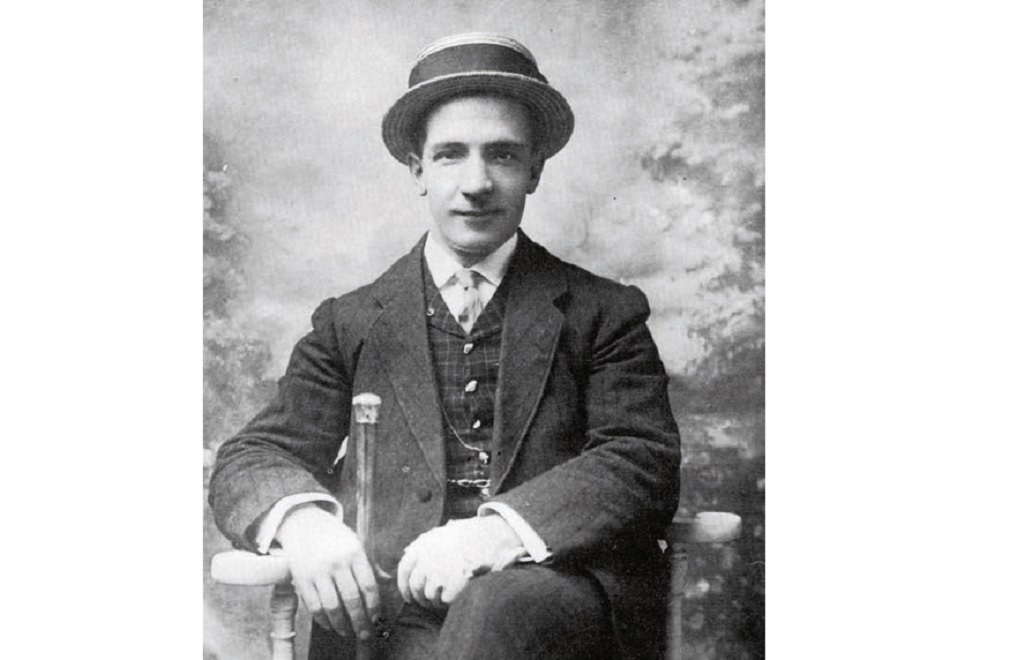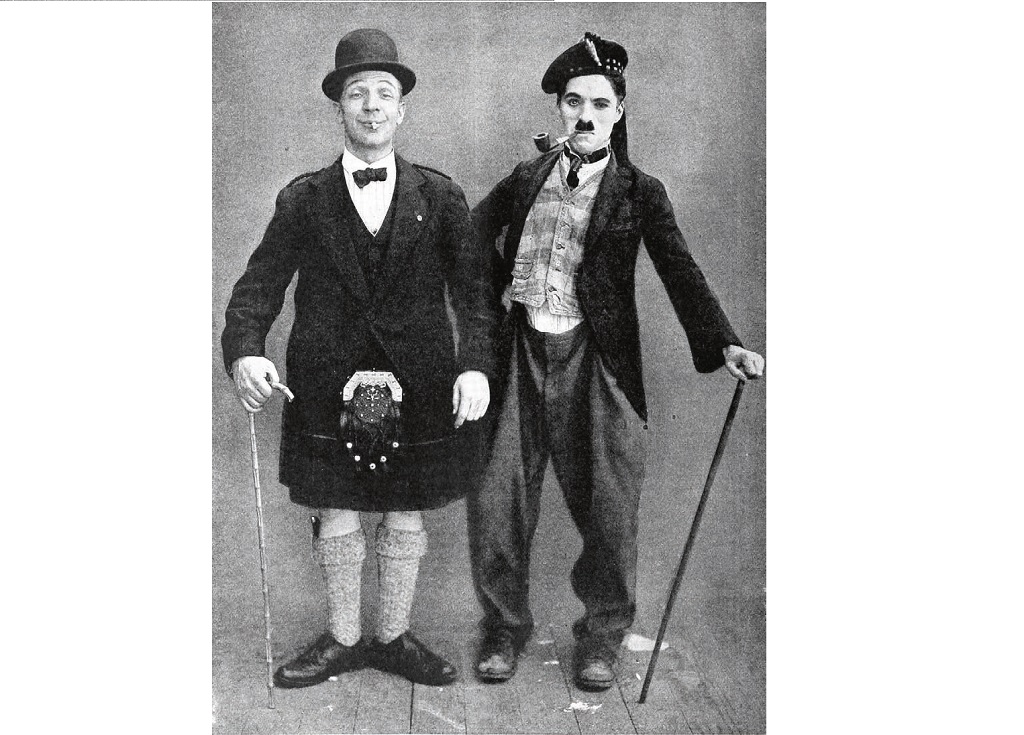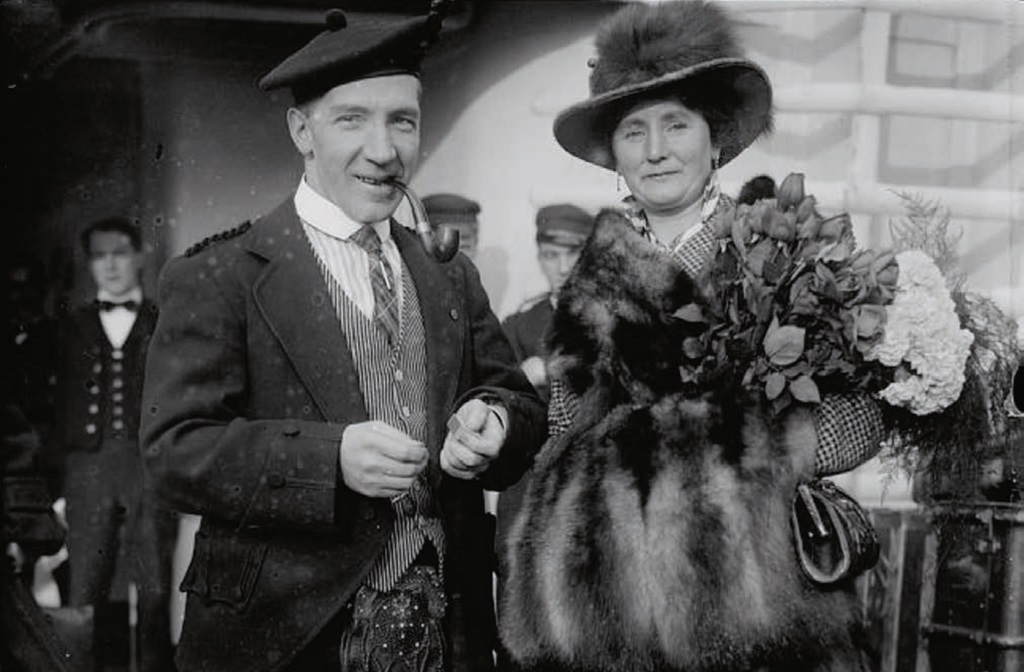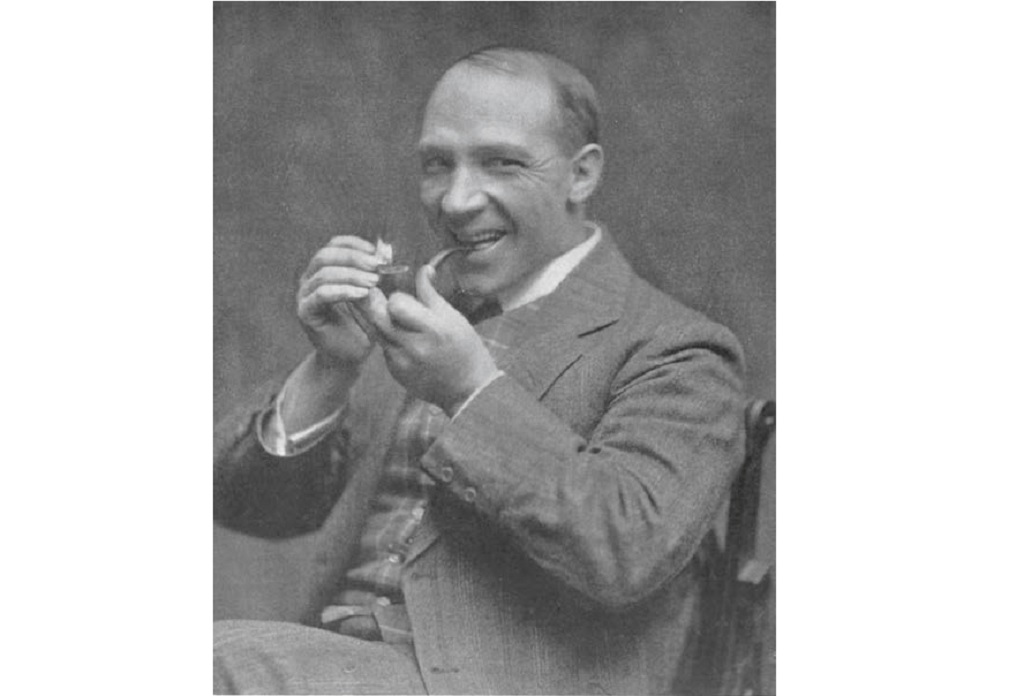To many people he was a national icon but for others he was an embarrassment – and even today Sir Harry Lauder splits opinion.
It seems apposite that the Sir Harry Lauder Road is the bypass road between Portobello and Edinburgh.
On one hand, Portobello was his birthplace; on the other, the Scottish intelligencia have often wanted to bypass the perceived embarrassment of Sir Harry Lauder.
He is an almost inexplicable paradox. Nobody exported ‘Scottishness’ more than he did – not even Sir Walter Scott – and nobody has been so vilified as he would be.
Henry – to give him his given name – was born in 1870. The family was skilled but humble, and after his father’s death, the future Harry was sent down the mines at the age of fourteen in the Eddlewood Colliery in South Lanarkshire. His wage was 10 shillings a week. By 1913 he would be earning the equivalent of £13,000 per night with his stage turns, encouraged by his fellow miners who first suggested that his comic turns, facial gurns and sentimental Burns renditions would do well at the music hall.
Maybe his stratospheric earnings were the reason that the poet Hugh MacDiarmid – for the record, a writer I consider the last century’s greatest Scottish poet – despised him with a furious passion.
‘Lauderism is, of course, only the extreme form of those qualities of canniness, pawkiness and religiosity which have been foisted upon the Scottish people by insidious English propaganda,’ wrote MacDiarmid. In another article he screeches at ‘the fact that this over-paid clown gets £1,500 a week’, and that this therefore demonstrates the ‘low state of public taste’.

A photographic portrait of Sir Harry (Photo: Picture Press/Alamy)
That low taste was – with songs like I love a lassie, A Wee Deoch-an-doris and Roamin’ in the Gloaming – what allowed Lauder to be the first Scottish artist to sell more than a million records and become the highest-paid entertainer in the world.
MacDiarmid’s intemperance at the Lauder image was a strange version of Jekyll and Hyde. Lauder’s stage persona was a parody of Scottishness, with his kilt, his cromach, his shuttlecock between lachrymose pathos and exuberant ebullience. Though MacDiarmid fulminated against Lauder, his own Scottishness – the kilt, the pipe, the ability to start fights in empty rooms and the genuine melancholy – is like a mirror image.
The difference is one was successful enough to build a mansion at Strathaven and the other lived in a but’n’ben outside Biggar.
‘Lauderism,’ thundered MacDiarmid, ‘has made thousands of Scotsmen so disgusted that they have gone to the opposite extreme and become, or tried to become, as English as possible.’ Thousands of Scotsmen – and women of the Caledonian persuasion as well – thought otherwise. The sales of MacDiarmid’s A Drunk Man Looks At The Thistle or To Circumjack Cencrastus were dwarfed by Harry Lauder At Home And Abroad, A Minstrel In France, My Best Scotch Stories, Wee Drappies and Ticklin’ Talks.
Lauder translated from music hall to film, appearing as Dickson McCunn in Huntingtower in 1927, written by another MacDiarmid rival, the novelist John Buchan.

Two icons of the early 20th century swap head gear, as Harry Lauder met Charlie Chaplin in 1918 (Photo: Source Collection / Alamy)
It is easy to see why Lauder was a red-rag to a bull as far as MacDiarmid was concerned. Lauder gave a private show to Edward VII at Sandringham in 1908, and in 1912 topped the bill of the first ever Royal Command Performance in front of George V.
Lauder appeared in a final film, The End Of The Road, in 1936. Although he lived for another 14 years, it is an elegiac piece in many ways for a musical comedy, and not just because of its rather daring subject matter: unhappy marriage, alcoholism, family strife. The title refers to one of Lauder’s most famous songs – Keep Right On To The End Of The Road. During the First World War, Lauder entertained troops on a regular basis, and was forthright about his views. ‘I know that I am voicing the sentiment of thousands and thousands of people when I say that we must retaliate in every possible way regardless of cost,’ said Lauder.
‘If these German savages want savagery, let them have it.’
The savages had their revenge the next year. Lauder’s son, John, of the 8th Argyll and Sutherland Highlanders, died at the battle of Pozières. Lauder composed the song shortly thereafter, a kind of strong-willed and unsentimental march to the idea of coping. His wife insisted that three days after they were informed of the death he was back on stage.
The ‘Sir’ came in 1919, especially as a result of his money-raising efforts during and after the conflict – in part in recognition of the ‘Harry Lauder Million Pound Fund’, a means to give care to wounded Scottish members of the armed forces. When Lauder died in 1950, both the Queen and Winston Churchill sent wreaths to the funeral.

Harry with his wife Ann, whom he married in 1891 (Photo: Alamy)
Churchill had always been supportive, referring to Lauder as ‘Scotland’s greatest ever ambassador’ and lauding that ‘by his inspiring songs and valiant life, [he] rendered measureless service to the Scottish race and to the British Empire’. His wife had died in 1927, and his niece cared for him until his death.
Lauder never mentioned what he made of the attacks on him as an ‘Uncle Tom’ in tartan. He was to the First World War what Vera Lynne was to the Second, touring the United States, Canada, Australia and New Zealand. That he commanded high fees must be balanced against the philanthropy and raising for charity to which he donated his money.
The animus against Lauder is peculiar.
Prominent theatre reviewer James Agate said of Lauder’s show that he knew he was a caricature, that the audience knew he was a caricature, that the critics were ‘in on the act’, and yet he was ‘cumulative and culminative’ with ‘an exceedingly fine feeling for character’.
‘The gist of it is not the superimposing of absurdity upon plain sense, but the discovery of the rational in lunatic or sentimental disguise,’ continued Agate. ‘When all is said and done the man remains an evangelist whose tidings are of pure joy.’

Sir Harry lights up his pipe for a picture taken in 1909
Lauder is often seen as the successor to McGonagall, a parody, a sell-out and a pseudo- Scot. But what is, I sometimes wonder, a ‘real’ Scot? I should not like to meet anyone who claims they are more real than Sir Harry Lauder.
But there is a kind of wryness about him which I think of as typically wry. He was famous for that cromach, which he danced around with, and which was a kind of signature of his Scottishness. He would give the cromach away, claiming it was the only one, to numerous fans. It was a kind of marketing and given that he invented the market for Scottishness, he can easily be forgiven.
H V Morton gives perhaps the best account of this enigma. ‘Millions of people who have never seen, and will never see, Scotland have experienced affection for the country whose homelier characteristics are so deliciously exaggerated in this man.
‘Lauder’s genius is a thing apart. The little Scotsman stands in the full flare of the floodlights speaking words which come straight from his heart. Every word rings true. In two minutes he has carried hundreds of men and women of different types and mentalities to the opposite pole of emotion. The greatest compliment the world pays him is the fact he is the only comedian who is permitted to be serious whenever he feels like it.’
(This feature was originally published in 2017)
TAGS

